-
Engine3.5L Turbocharged V6
-
Power375 HP / 470 LB-FT; 400 HP / 480 LB-FT
-
Transmission10-Speed Automatic
-
DrivetrainRWD; AWD
-
Curb Weight5,544 - 5,793 LBS
-
Towing9,200 - 9,300 LBS
-
Seating7 or 8
-
CargoUp to 121.4 CU FT
-
MPG17 City / 24 Hwy
-
Base Price$52,980
-
As Tested Price$70,065
MALIBU, Calif. — It used to be enough simply to be large and rugged. In those simpler days, the portly Expedition and even bulkier Excursion roamed suburbia like two large adult sons, sparring with the Suburban and its variants, selling by the fistful. And suddenly, big wasn't enough. Automakers figured out how to make the wallowiest SUVs dance. Refinement, quietness, and quality materials pervaded the segment. Have you seen a mid-trim Tahoe lately? Cover the badges and it'd pass for an Escalade interior concept from a few years ago. You can have it all: space for eight, the ability to tow an oil tanker, Wi-Fi, and even a modicum of all-terrain capability. (Not that you'll use it!) You can have it all for a price, at least — those too have increased, along with the refinement.
Somewhere along the way, the Expedition was left on the side of the road. It's not clear exactly when it stopped being a class leader, but ditching the V8 in 2015 wasn't enough to move the needle. That changes now. Its platform-mate, the Lincoln Navigator, either dethroned or is a very serious competitor to the Cadillac Escalade, depending on your perspective and prejudices. That it's seriously mentioned in the same breath as that wildly successful luxury SUV is a big, huge leap forward.
Rather than reinvent the Expedition (and Navigator) entirely, Ford dug deep and built the big SUV it should have all along. Instead of a few distinct advantages lost in a sea of mediocrity, the entire vehicle is on par with or better than the GMT2K-platform trucks from GM. Beyond the independent rear suspension, which helps with dynamics as well as rear cargo-floor flatness, and the gee-whiz EcoBoost V6 with best-in-class theoretical fuel economy, there's a lightweight aluminum body perched on top of a traditional steel ladder frame. Depending on trim and configuration, it's up to 300 pounds lighter than its predecessor.
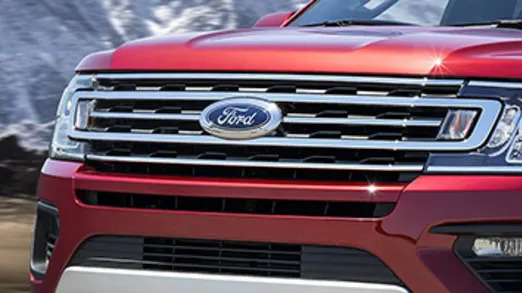
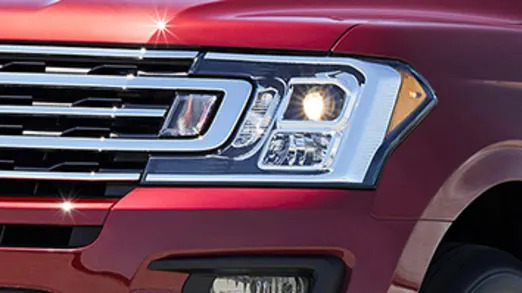
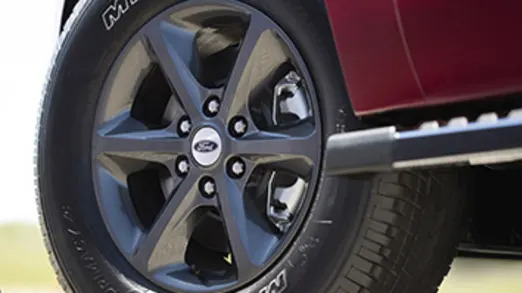
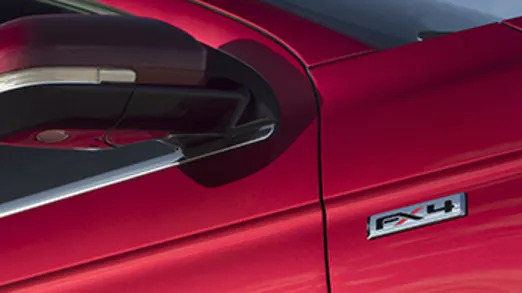
It's also immense, especially in Max long-wheelbase form. The Expedition looks imposing, but it's also one of the cleanest interpretations of Ford's new truck styling language. In particular, the monolithic headlight-grille bar looks upscale but is a simpler shape than the facelifted 2018 F-150's, which looks like it ran into a couple of chromed towel bars on the way to the ranch. There's not much going on in the profile — the first adjective that comes to mind is Suburbanish, and imitation is flattery — and the rear is indifferently attractive. What's more important is the overall effect. This is something you'd be OK leaving with the valet. The valet might not even stuff it behind the hotel.
Inside, things are much more dramatic. It's no new Navigator, sure, the interior of which is like 2017 as imagined in 1967, but it's a sea change compared to the old Expedition's menagerie of hard plastic shapes, textures, and colors — all slightly nasty looking, and everywhere. So too with its design. Where bulkiness had awkwardly stood in for handsome chunkiness, we now have something that's befitting of a present-day Ford. The hard plastics, while still present, at least recede into the background, overpowered by the extra-bold HVAC vents and array of colors. Our tester had wood veneer on the center console, cream-colored upholstery and trim, silver-colored plastic, dark soft dash covering, and dark hard smooth plastic, depending on where you looked. Still busy, but much nicer, although there's maybe a bit too much visible plastic in an SUV that can easily top $70,000.
The engine, while not new, has been improved, with more power and torque available in the Platinum trim. For those keeping score at home, the lower-output EcoBoost makes a healthy 375 horsepower and 470 pound-feet of torque, and feels exactly as satisfying as a V8 making similar power. There's torque everywhere, very little lag, and it even sounds kind of OK. The Platinum version makes 400 hp and 480 lb-ft. Both are well north of the old Expedition's EcoBoost V6, which merely made 365 hp and 420 lb-ft. And both new engines trounce the Suburban's 5.3-liter V8, which is good for 355 horsepower and 383 lb-ft of torque, particularly in terms of twist.
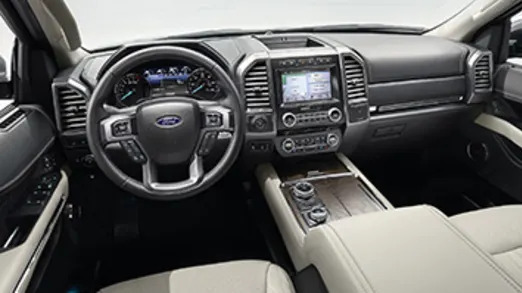
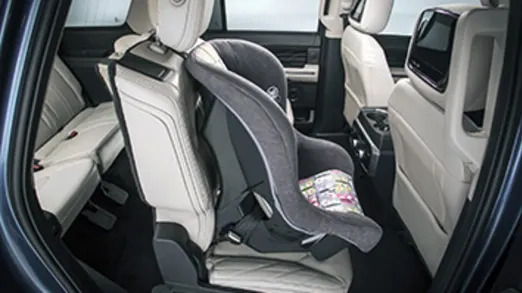
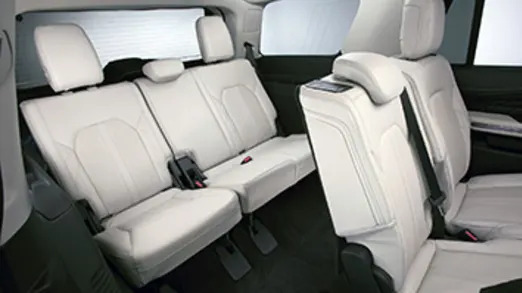

And then there's fuel economy. On paper, the Expedition is king by a hair, pulling 20 miles per gallon combined (17 city, 24 highway) out of the EPA test cycle. The poor Suburban can only manage 19 (16 city, 23 highway). This may be a false economy, because our real-world experience is that turbocharged engines can guzzle more fuel than similar non-turbo counterparts unless you drive like you're in an EPA test. Which is to say, virtually impossible.
It's entirely possible to tow up to 9,300 pounds with either engine. We spent about 20 minutes pulling a 6,500-pound Airstream trailer around the hilly mountain roads north of Malibu, and despite lacking advanced towing features like rear-axle air suspension (not available in any Expedition), it did perfectly fine up and down long grades. Available trailer reversing assist is super intuitive and extremely handy to have. If you pull anything of value, ever, it's worth the peace of mind.
What's particularly impressive about its towing prowess is that the Expedition's newfangled 10R automatic didn't freak out once. It's a 10-speed unit, codeveloped with GM and also appearing on the F-150 and Mustang (adapted, of course, to each application with different cases and internals, but all the same basic design). If you've read anything about FCA's nine-speed unit's calibration woes, you'll understand why we approached it with some trepidation. Since it's a close-ratio box, how would it handle downshifts of three or even four gears while hauling a trailer? Apparently Ford nailed it the first time, because the 10R appears to be just as competent as any modern (and proven) eight-speed unit. It's clean and lurch-free up and down the range, knocks off three-gear downshifts with a completely acceptable pause, and generally doesn't feel unusual at all in operation. That's high praise. You, the consumer interested in the Expedition, don't want to notice what the automatic is doing. It should do its job, well and quietly, in the background. Check, check, and check.
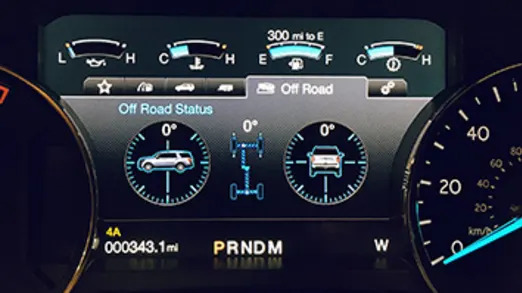
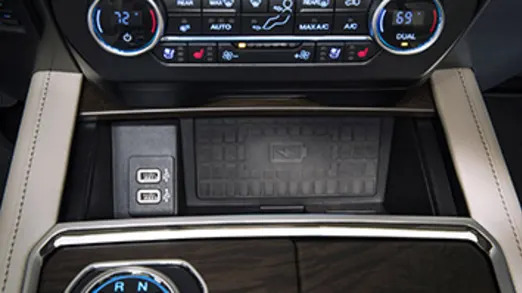
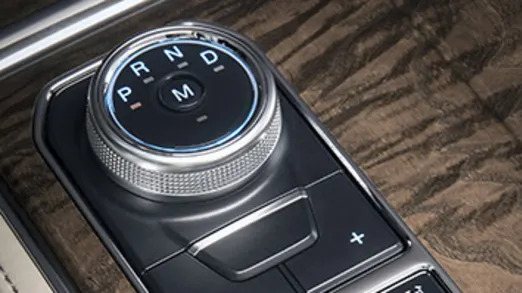
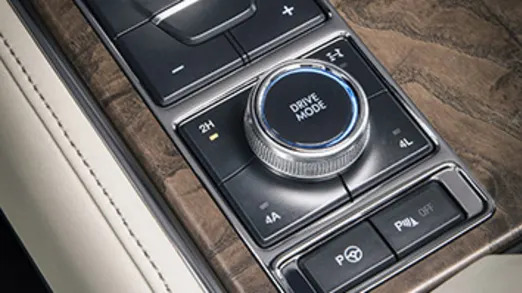
The highest praise we can give the Expedition is that it drives smaller than it is. Which is amazing, because it's immense. And large, body-on-frame SUVs have a tendency to wallow like a boat bobbing on ocean rollers enough to make a merchant mariner green. Slowly, surely, automakers are figuring out how to dial out those odd rolling motions. The Expedition does this without having advanced active stabilizer bars or active suspension. It's just clever tuning, and moreover, a lighter body that means there's less mass knocking the suspension around. On Californian canyon roads, the Expedition hustles without falling on its face. It's almost fun, even, to find a rhythm in a beast like this, slowly increasing the pace to just beyond the point of incredulity without breaking the spell. Bottom line: You can corner faster than your passengers or cargo will appreciate.
Last, and most important, it's comfortable. The front seats — well, like the suspension, you don't notice them, and that's fantastic. They're just there, supporting you, without making you fidget. The second-row bench, despite its thinness in profile and the requirement for it to tilt-and-slide to access the third row, provides plenty of headroom, adult comfort for all three positions, and theater-style elevation to give a great view of the road ahead. In fact, the middle seat in the second row is the best seat in the house if you have the optional panoramic vista roof. There's glass everywhere, ahead, above, to the sides. Sit back there for a scenic drive and you can see basically everything. It's an incredible experience.
The third row is a compromise, of course. It's adequate for someone of average height — I'm 5'10" and barely sensed the headliner above me — and positively roomy for anyone smaller. On short-wheelbase models, space behind the third row is limited, but fold both rows flat with a button push and a cavernous, flat space emerges, 51.4 inches wide and long enough for me to stretch out. A couple that wants to camp could plop a mattress down and get comfy.

Getting to the campsite won't be much of a chore, either, despite the Expedition's girth (81.6 inches not counting the mirrors), massive wheelbase (up to 131.6 inches), and height (up to 76.4 inches). Even base XLT trucks equipped with 4WD are capable of handling a Forest Service road at least. There's at least 9.7 inches of ground clearance, and the FX4 "offroad" package gains about an inch due to some trimming of the front airdam. Opt for either the FX4 or the towing package, and you'll get an electronic limited-slip rear differential, which helps if it's muddy or sandy, as does the terrain management software. FX4 also includes seven skid plates underneath, which you'll want if you think you might have to test the rig's breakover angle. We ran a short course that was a perfect simulation of a slightly gnarly unimproved forest road, with 20 percent grades, loose dirt, and rocks. The Expedition did fine, and if you need more than the ability to go camping up in the mountains, you probably want a different truck. One that you won't mind pinstriping on overhanging branches intent on caressing the Expedition's wide, wide flanks.
Meanwhile, if you have a large family, think the Suburban is a bit too contrived-looking, and you have too much trailer to pull behind a Sequioa or Armada, this is your thing. So let's talk cash, because you'll need a fair bit to saddle one up. A short-wheelbase XLT starts at $52,980. That's a tad more than a 2018 Chevy Suburban LS with the 5.3-liter V8, which will run you $51,445. Add $2,600 to step up to a MAX. On the other end of the scale, a Platinum Max starts at $76,595 and goes north from there. Premier trim comes in at $66,125, still well south of a SWB Platinum Expedition. Throw incentives and so forth into the mix, and things get even fuzzier.
The Suburban doesn't have a neat turbo V6 engine or an independent rear axle, both of which account for some of the price difference. And frankly, the Suburban just doesn't drive as well as the Expedition. For Ford, this is a coup that brings the Expedition not only back into relevancy, but all the way to the front of the class. If you can find a better large, traditional SUV, we recommend you buy it. Until then, the Expedition is king.
Related Video:
Somewhere along the way, the Expedition was left on the side of the road. It's not clear exactly when it stopped being a class leader, but ditching the V8 in 2015 wasn't enough to move the needle. That changes now. Its platform-mate, the Lincoln Navigator, either dethroned or is a very serious competitor to the Cadillac Escalade, depending on your perspective and prejudices. That it's seriously mentioned in the same breath as that wildly successful luxury SUV is a big, huge leap forward.
Rather than reinvent the Expedition (and Navigator) entirely, Ford dug deep and built the big SUV it should have all along. Instead of a few distinct advantages lost in a sea of mediocrity, the entire vehicle is on par with or better than the GMT2K-platform trucks from GM. Beyond the independent rear suspension, which helps with dynamics as well as rear cargo-floor flatness, and the gee-whiz EcoBoost V6 with best-in-class theoretical fuel economy, there's a lightweight aluminum body perched on top of a traditional steel ladder frame. Depending on trim and configuration, it's up to 300 pounds lighter than its predecessor.




It's also immense, especially in Max long-wheelbase form. The Expedition looks imposing, but it's also one of the cleanest interpretations of Ford's new truck styling language. In particular, the monolithic headlight-grille bar looks upscale but is a simpler shape than the facelifted 2018 F-150's, which looks like it ran into a couple of chromed towel bars on the way to the ranch. There's not much going on in the profile — the first adjective that comes to mind is Suburbanish, and imitation is flattery — and the rear is indifferently attractive. What's more important is the overall effect. This is something you'd be OK leaving with the valet. The valet might not even stuff it behind the hotel.
Inside, things are much more dramatic. It's no new Navigator, sure, the interior of which is like 2017 as imagined in 1967, but it's a sea change compared to the old Expedition's menagerie of hard plastic shapes, textures, and colors — all slightly nasty looking, and everywhere. So too with its design. Where bulkiness had awkwardly stood in for handsome chunkiness, we now have something that's befitting of a present-day Ford. The hard plastics, while still present, at least recede into the background, overpowered by the extra-bold HVAC vents and array of colors. Our tester had wood veneer on the center console, cream-colored upholstery and trim, silver-colored plastic, dark soft dash covering, and dark hard smooth plastic, depending on where you looked. Still busy, but much nicer, although there's maybe a bit too much visible plastic in an SUV that can easily top $70,000.
The engine, while not new, has been improved, with more power and torque available in the Platinum trim. For those keeping score at home, the lower-output EcoBoost makes a healthy 375 horsepower and 470 pound-feet of torque, and feels exactly as satisfying as a V8 making similar power. There's torque everywhere, very little lag, and it even sounds kind of OK. The Platinum version makes 400 hp and 480 lb-ft. Both are well north of the old Expedition's EcoBoost V6, which merely made 365 hp and 420 lb-ft. And both new engines trounce the Suburban's 5.3-liter V8, which is good for 355 horsepower and 383 lb-ft of torque, particularly in terms of twist.




And then there's fuel economy. On paper, the Expedition is king by a hair, pulling 20 miles per gallon combined (17 city, 24 highway) out of the EPA test cycle. The poor Suburban can only manage 19 (16 city, 23 highway). This may be a false economy, because our real-world experience is that turbocharged engines can guzzle more fuel than similar non-turbo counterparts unless you drive like you're in an EPA test. Which is to say, virtually impossible.
It's entirely possible to tow up to 9,300 pounds with either engine. We spent about 20 minutes pulling a 6,500-pound Airstream trailer around the hilly mountain roads north of Malibu, and despite lacking advanced towing features like rear-axle air suspension (not available in any Expedition), it did perfectly fine up and down long grades. Available trailer reversing assist is super intuitive and extremely handy to have. If you pull anything of value, ever, it's worth the peace of mind.
What's particularly impressive about its towing prowess is that the Expedition's newfangled 10R automatic didn't freak out once. It's a 10-speed unit, codeveloped with GM and also appearing on the F-150 and Mustang (adapted, of course, to each application with different cases and internals, but all the same basic design). If you've read anything about FCA's nine-speed unit's calibration woes, you'll understand why we approached it with some trepidation. Since it's a close-ratio box, how would it handle downshifts of three or even four gears while hauling a trailer? Apparently Ford nailed it the first time, because the 10R appears to be just as competent as any modern (and proven) eight-speed unit. It's clean and lurch-free up and down the range, knocks off three-gear downshifts with a completely acceptable pause, and generally doesn't feel unusual at all in operation. That's high praise. You, the consumer interested in the Expedition, don't want to notice what the automatic is doing. It should do its job, well and quietly, in the background. Check, check, and check.




The highest praise we can give the Expedition is that it drives smaller than it is. Which is amazing, because it's immense. And large, body-on-frame SUVs have a tendency to wallow like a boat bobbing on ocean rollers enough to make a merchant mariner green. Slowly, surely, automakers are figuring out how to dial out those odd rolling motions. The Expedition does this without having advanced active stabilizer bars or active suspension. It's just clever tuning, and moreover, a lighter body that means there's less mass knocking the suspension around. On Californian canyon roads, the Expedition hustles without falling on its face. It's almost fun, even, to find a rhythm in a beast like this, slowly increasing the pace to just beyond the point of incredulity without breaking the spell. Bottom line: You can corner faster than your passengers or cargo will appreciate.
Last, and most important, it's comfortable. The front seats — well, like the suspension, you don't notice them, and that's fantastic. They're just there, supporting you, without making you fidget. The second-row bench, despite its thinness in profile and the requirement for it to tilt-and-slide to access the third row, provides plenty of headroom, adult comfort for all three positions, and theater-style elevation to give a great view of the road ahead. In fact, the middle seat in the second row is the best seat in the house if you have the optional panoramic vista roof. There's glass everywhere, ahead, above, to the sides. Sit back there for a scenic drive and you can see basically everything. It's an incredible experience.
The third row is a compromise, of course. It's adequate for someone of average height — I'm 5'10" and barely sensed the headliner above me — and positively roomy for anyone smaller. On short-wheelbase models, space behind the third row is limited, but fold both rows flat with a button push and a cavernous, flat space emerges, 51.4 inches wide and long enough for me to stretch out. A couple that wants to camp could plop a mattress down and get comfy.

Getting to the campsite won't be much of a chore, either, despite the Expedition's girth (81.6 inches not counting the mirrors), massive wheelbase (up to 131.6 inches), and height (up to 76.4 inches). Even base XLT trucks equipped with 4WD are capable of handling a Forest Service road at least. There's at least 9.7 inches of ground clearance, and the FX4 "offroad" package gains about an inch due to some trimming of the front airdam. Opt for either the FX4 or the towing package, and you'll get an electronic limited-slip rear differential, which helps if it's muddy or sandy, as does the terrain management software. FX4 also includes seven skid plates underneath, which you'll want if you think you might have to test the rig's breakover angle. We ran a short course that was a perfect simulation of a slightly gnarly unimproved forest road, with 20 percent grades, loose dirt, and rocks. The Expedition did fine, and if you need more than the ability to go camping up in the mountains, you probably want a different truck. One that you won't mind pinstriping on overhanging branches intent on caressing the Expedition's wide, wide flanks.
Meanwhile, if you have a large family, think the Suburban is a bit too contrived-looking, and you have too much trailer to pull behind a Sequioa or Armada, this is your thing. So let's talk cash, because you'll need a fair bit to saddle one up. A short-wheelbase XLT starts at $52,980. That's a tad more than a 2018 Chevy Suburban LS with the 5.3-liter V8, which will run you $51,445. Add $2,600 to step up to a MAX. On the other end of the scale, a Platinum Max starts at $76,595 and goes north from there. Premier trim comes in at $66,125, still well south of a SWB Platinum Expedition. Throw incentives and so forth into the mix, and things get even fuzzier.
The Suburban doesn't have a neat turbo V6 engine or an independent rear axle, both of which account for some of the price difference. And frankly, the Suburban just doesn't drive as well as the Expedition. For Ford, this is a coup that brings the Expedition not only back into relevancy, but all the way to the front of the class. If you can find a better large, traditional SUV, we recommend you buy it. Until then, the Expedition is king.
Related Video:
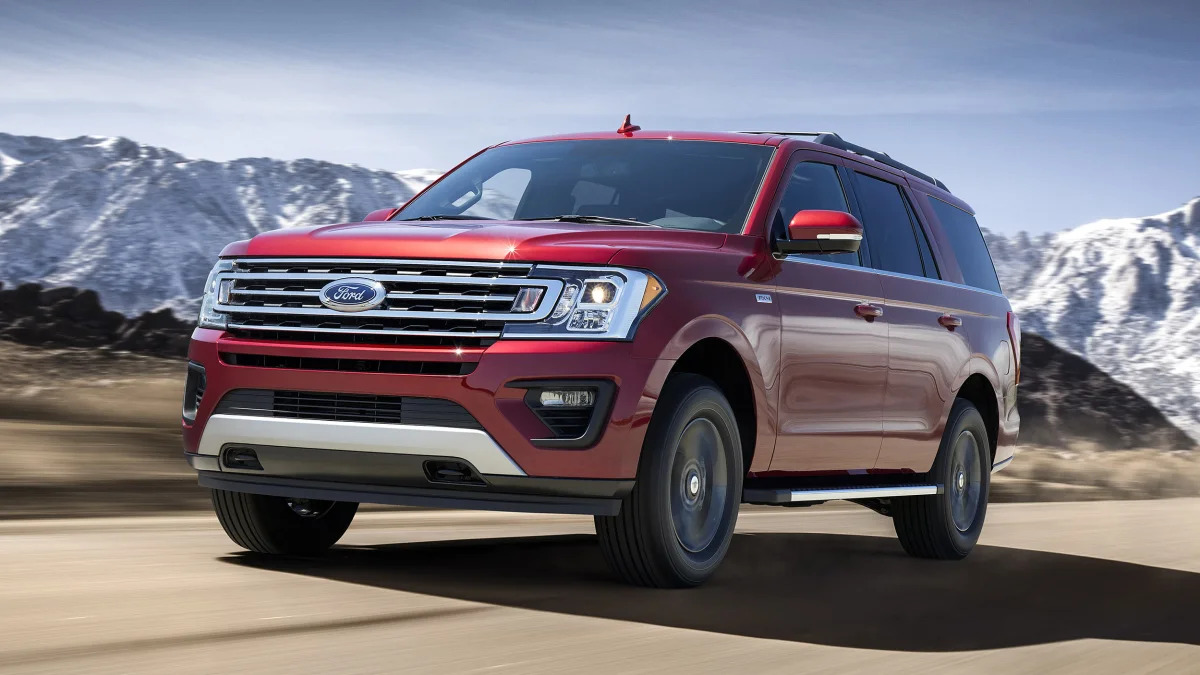









Sign in to post
Please sign in to leave a comment.
Continue